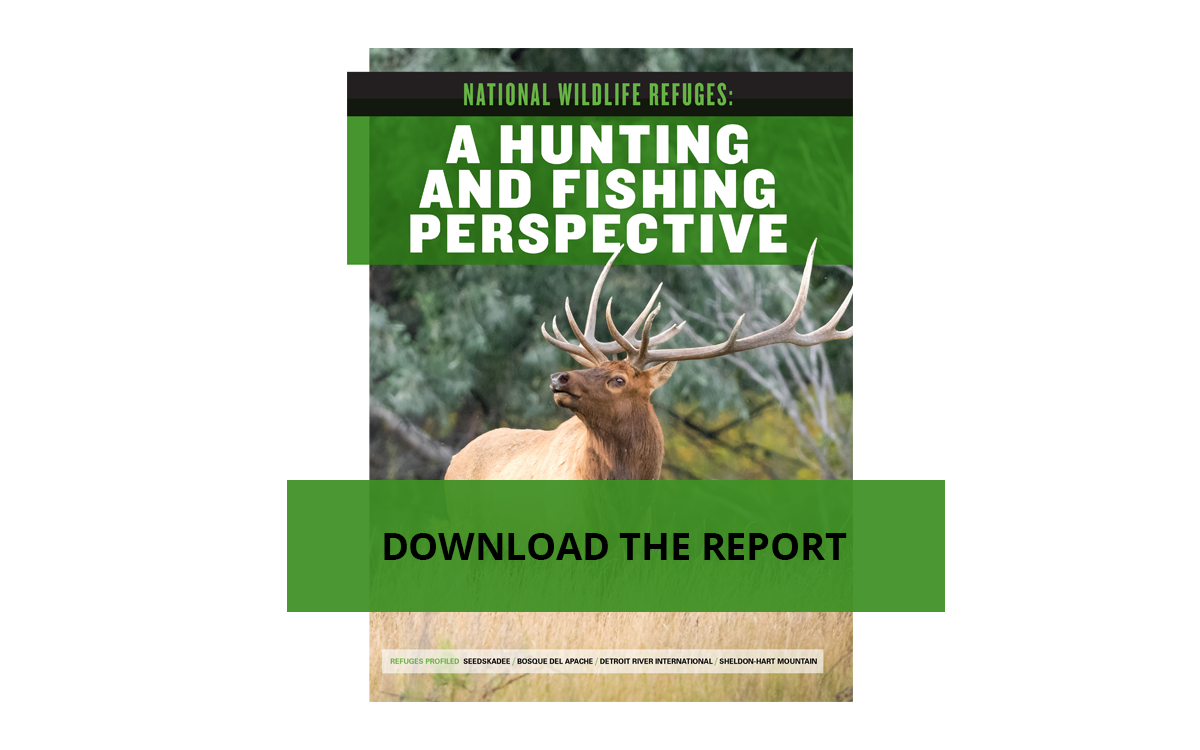Sanctuary for Fish, Wildlife, Anglers, and Hunters
Over the past several years, sportsmen and sportswomen cheered as hunting and fishing opportunities on national wildlife refuges have been expanded. Currently, of 567 total refuges, 427 are open to hunting and 376 are open to fishing. In addition to conserving valuable fish and wildlife habitat, these public lands provide outstanding experiences in the field and on the water for all Americans.
Looking ahead to the future of the National Wildlife Refuge System—including the potential expansion of the System —the hunting and fishing community must continue to advocate to the U.S. Fish and Wildlife Service for the conservation of fish and wildlife habitat and for the continuation of our outdoor pastimes.
More than 32 outdoor brands and conservation groups have come together to show the importance of hunting and fishing to the founding and development of the National Wildlife Refuge System, highlight the continued relevance of our community’s activities as a means of generating funding and support for refuges, and define the principles that should guide the system’s future from the perspective of hunters and anglers.
Here’s a look at these 12 principles pulled from our newest report.
HUNT-FISH TENETS FOR REFUGES
National wildlife refuges are integral to the conservation of America’s fish and wildlife. They also provide a place for Americans to relax and recreate—from birding and hiking, to hunting and fishing. To continue these traditions, new or expanded refuges need a framework to garner broad support from the fishing and hunting community. The following tenets must be followed to secure the sporting community’s support for additions and expansions.
- Proposals for new or expanded national wildlife refuges should be developed through a public process–one that includes hunters and anglers, state fish and wildlife agencies, agricultural producers, as well as appropriate State, Tribal, and local governments, and the general public.
- For refuges created out of public lands administered by a separate land management agency, state fish and wildlife agencies should retain authority over the management of fish and wildlife populations to the maximum extent allowed by law.
- The input of hunters and anglers should inform all applicable management plans for national wildlife refuges.
- Protection of important fish and wildlife habitat should be the highest priority of any refuge.
- Proposals for new or expanded national wildlife refuges will require support from the public, including hunters and anglers.
- Hunting and fishing opportunities should be prioritized as “wildlife-dependent recreational uses” to the maximum extent, and public access should be enhanced or expanded where compatible with the objectives of any new or existing refuge to ensure no net loss of hunting and fishing opportunities across the refuge system.
- Reasonable public access should be established or retained to enable continued hunting, fishing, and other recreational opportunities, as compatible with refuge objectives.
- Funding should be dedicated to the U.S. Fish and Wildlife Service to secure the resources, staffing, and expertise required to effectively manage the refuge system, including any new or expanded refuge units.
- New or expanded refuge units should bolster ecosystem health by conserving year-round, seasonal, and migratory habitats for both game and nongame species, including “species of greatest conservation need” that have been identified by state fish and wildlife agencies.
- Consistent with National Wildlife Refuge System policies, cooperative agriculture such as haying and grazing on refuge lands should continue to the extent that it meets specific wildlife or habitat management goals and objectives.
- New or expanded refuges should prioritize opportunities to add unique fish, wildlife, or ecological values and hunting and angling opportunities that are underrepresented in the refuge system.
- To the maximum extent practicable and consistent with refuge purposes, regulations governing hunting and fishing on new or expanded refuges should remain consistent with state regulations and limit additional restrictions on hunting and fishing opportunities.
Click here to download the full refuge report.
Click here to be notified of opportunities to get involved.
For more information, please contact Joel Webster, Vice President of Western Conservation.





